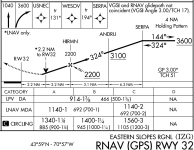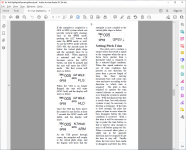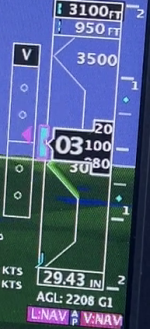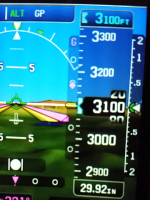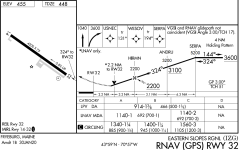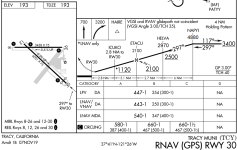Alan,
I watched your video frame-by-frame as you approached the FAF-1 waypoint (ANDRU) at 3,100 ft.
At the very first frame where the vertical deviation indicator (VDI) pops up showing the location of the glidepath, the glidepath is surprisingly close to the aircraft with only a second or two before you intercept the glidepath.
View attachment 24117
When I fly this approach with my system in the same manner (crossing ANDRU at 3,100 ft), and watch the video frame-by-frame, the VDI pointer is much higher at the dot above the center when the VDI first pops up with quite a bit of additional time before glidepath interception.
I I choose vtf at 3600 inbound from serpa it works
View attachment 24119
When flying at 3,100 ft, the glidepath is only 100 ft above ANDRU and the aircraft will intercept this glidepath in only 0.3 nm after crossing ANDRU, so this is indeed a very "tight" approach.
View attachment 24118
In contrast, for the similar appearing approach at Tracy airport that Bob mentions above, the glidepath is 470 ft above the FAF-1 waypoint (HELVA) and the aircraft doesn't intercept it for another 1.5 nm after crossing HELVA at 2,500 ft. No doubt that this approach would be no problem for your autopilot.
View attachment 24120
Not sure why your VDI becomes active with so little vertical space between the aircraft and the glidepath at ANDRU, but this is certainly not working for an autopilot that requires 6 secs to arm.
Steve



